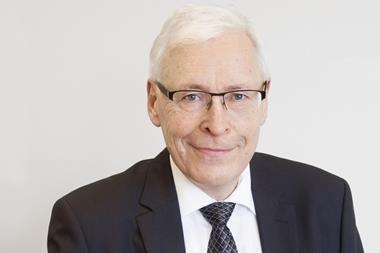Hungary has modified its initial second pillar pensions architecture to introduce multiple portfolios, Thomas Escritt reports
Pension fund portfolios in central and eastern Europe have been dogged by conservatism since their inception, risk-averse regulatory regimes have prescribed fixed-income allocations of well over 50%. This has locked retirement savers into unattractive yields and made compulsory retirement saving an altogether unappealing proposition.
Recently, there have been moves towards liberalisation, with investment restrictions easing up in countries including Bulgaria and Estonia, as the need for higher returns is more widely appreciated.
Hungary, the first country in the region to introduce a funded second pillar to supplement the state pension, has been in the vanguard of adapting regulations to market realities. From the beginning of last year, pension fund providers have been able to introduce greater risk after the financial services supervisory authority, the PSZAF, imported an idea from neighbouring Slovakia, giving them the option of offering three different portfolios to suit retirement savers’ risk appetites. Dubbed the classic, balanced and growth portfolios, the options are still subject to strict regulations. The PSZAF has specified exactly what allocation to equities a fund in each category has to maintain.
“The classic option is a low-risk portfolio with an equity allocation of no more than 10%,” says Attila Gaál, deputy head of pensions supervision at PSZAF. “The balanced portfolio is a mid-term portfolio with an equity allocation of between 10% and 40%, while the growth portfolio has an equity allocation of more than 40%.”
The move falls short of complete liberalisation. It does not give funds the opportunity to sell themselves to investors on the basis of their sheer stock-picking wizardry, but it does allow employees further away from retirement to opt for a more aggressive portfolio.
But there is a reason for keeping Hungarian funds inside a relatively tight framework, according to Gaál. “One important element of the system is that it is standardised,” he says. “Each fund can only offer three portfolios, and the restrictions are defined, so you can move from one fund to another, comparing performance over the long term.”
If the change seems late in coming, there is a reason. Hungarians are notoriously risk-averse - a recent poll asking Hungarians what they would do with a windfall pot of money found that most would opt for a life insurance policy, preferring that even to splashing out on a luxury purchase. Gaál argues that incorporating a degree of conservatism into the system - effectively making it impossible for pension funds to lose money - was essential to build confidence in the system. “But most experts agree that, in the long term, if you want an appropriate yield you have to invest in higher-risk instruments, including equities, property, venture capital and derivatives,” Gaál says. All of these instruments are available to buccaneer savers who opt for the growth portfolio.
Nonetheless, only a minority are expected to exercise their right to choose a risk profile. “If anybody doesn’t choose, they get allocated to a portfolio according to their age,” Gaál explains.
People with more than 15 years left until retirement age are allocated to growth, those with between five and 15 years left are put into balance, while those with less than five years to go until retirement are placed in the classic portfolio. With Hungary’s retirement age being 62, those aged below 47 default to the growth portfolio, unless they choose otherwise.
Investment expertise is still a relatively rare commodity in Hungary, meaning that most are expected to make do with their age group’s default allocation. Differing risk profiles have been available for a while in the voluntary third pillar, where only around 10% of fund members have exercised their right to choose. Gaál says that widespread risk aversion may nonetheless lead many to override their default allocation to a growth portfolio in favour of a conservative investment strategy.
Even this would be progress, he feels: “Some may choose the more conservative portfolio, but at least that will be a conscious decision.”
Others are less sure that the new system represents real progress. “People will have the right to choose, of course, but what good does that do them if they don’t know what it means,” says Agnes Matics, an actuary who deplores the low level of financial knowledge among the Hungarian public.
Others wonder whether the new system will not prove to be an excessively costly exercise. Gabor Soproni, who runs the electrical industry pension fund VITNyP, says introducing the new systems will be an expensive process, the costs of which will eventually have to be passed on to fund members via management fees. While most pension funds are run by established financial services players like OTP Bank and Aegon, VITNyP conducts the bulk of its portfolio management in-house, earning it disapproving looks from many industry figures.
Soproni holds strongly the view that most government investment regulations are a hindrance. “Ministries are ill-suited to regulating financial markets,” he says. “They have a list of permitted financial instruments, when really they should just list those instruments that are banned.”
Hungary’s pension funds are a hybrid beast. Owned by their members, they are branded and operated by the financial institution that runs the portfolio and handles the pension administration. The government is looking at reforms that will change this structure, which Gaál suggests is less than ideal. “You have a profit-oriented company running a fund which is organised on a mutual basis,” he says. “It doesn’t contribute to transparency.” This is one of the reasons cited for the relatively high charging levels of Hungarian funds. Introducing alternative portfolios should not burden funds unduly, however. “Developing the software brings about a one-time fee, of course, but I have not heard of anyone charging more on contributions because of the software developments,” Gaál says.
He is also suspicious of claims that the high management costs in Hungary are dragging down performance. “It is a stereotype that Hungarian funds are expensive,” he says. “If you compare our pension funds with mutual funds or insurance policies, then the pension funds are undoubtedly cheaper. It may be that financial products in Hungary are more expensive than in western Europe, of course.”
For now, the new system exists only on paper. Funds have only been obliged to offer alternate portfolios since 1 January this year. Although the possibility existed last year, only one, the Premium Mandatory Pension Fund, has taken the option of offering a growth portfolio with an equity allocation of 50%. This was the only option the fund, which has been up and running for just over a year, offered, and the introduction of compulsory alternate portfolios will force it to introduce two lower-risk products.
Estonia has gone down a similar route, with providers allowed to offer up to three portfolios with progressively more aggressive investment strategies. Here, too, new entrants to the system are allocated to a given pension fund by lottery if they fail to exercise their right to choose. The Estonian approach is more cautious, however, since, regardless of age, the indecisive are automatically allocated to a conservative portfolio.
“During the implementation phase, which is now over, there were groups who were allowed to choose,” says Robert Kitt, chief executive of Hansa Investment Funds, an asset manager that also runs Estonia’s largest private pension fund. “New entrants to the labour market are subject to the current system. A lottery is held between five conservative, fixed-income pension funds. The state forces people to join the system, but does not force them to take any equity risk.”
In entrepreneurial Estonia, however, people are more inclined to seize control of their finances. According to Kitt, fewer than 20% go through the lottery process. Most make an active choice.














No comments yet